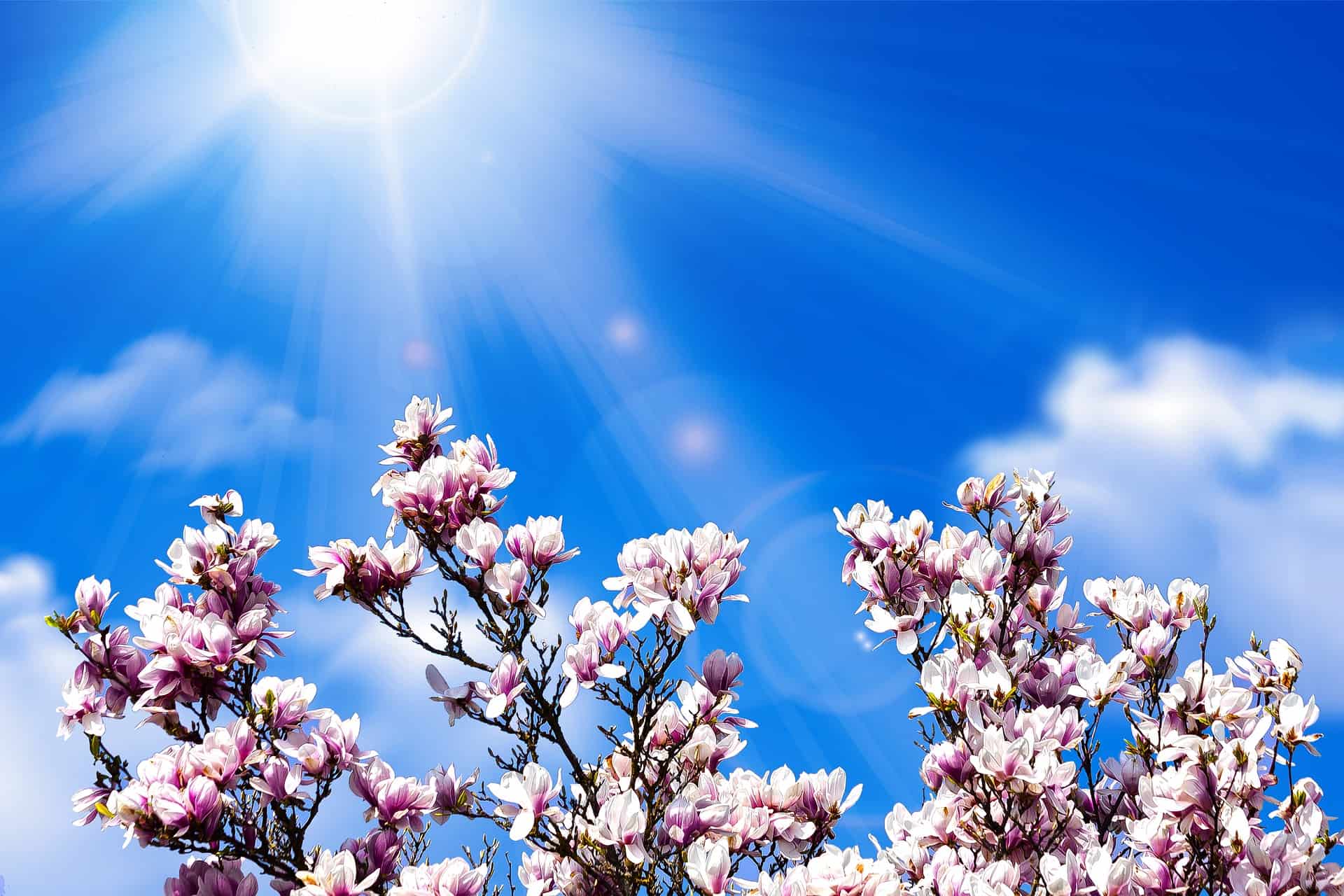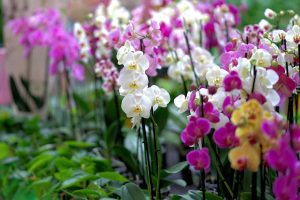What is the best fertilizer for magnolia trees? The best fertilizer for magnolia trees should contain a balanced blend of primary nutrients along with essential trace elements. Magnolia trees also prefer to grow in slightly acidic soil, which means that they need a fertilizer that’s made for acid-loving plants.
Best Fertilizer for Magnolia Trees
| Image | Name | Rating | Shop |
|---|---|---|---|
 | TreeHelp Annual Care Kit for Magnolia Trees | ||
 | Espoma Holly-Tone Plant Food | ||
 | Jobe’s Tree & Shrub Fertilizer Spikes | ||
 | BioAdvanced 12 Month Tree Fertilizer with Insect Protection |
Magnolia Tree Fertilizer
TreeHelp Annual Care Kit for Magnolia
The TreeHelp Annual Care Kit (Buy Online) is the best fertilizer for magnolia trees. This complete package of magnolia fertilizer includes one 3.3-Pound Bag of Premium Fertilizer, Biostimulant, and a bottle of Mycorrhizal Fungi Treatment.
Each magnolia feed and fertilizer TreeHelp Annual Care Kit contains enough nutrients for 2 to 3 small to medium-sized trees or one mature magnolia tree.
Espoma HT36 Holly-Tone Plant Food Bag, 36-Pound, 36 lb, Multicolor
Espoma Holly-Tone Plant Food (Buy Online) is the best fertilizer for acid-loving plants like magnolia trees. This fertilizer has a 4-3-4 NPK ratio, and it contains 5% sulfur which is one of the primary holly-tone ingredients that helps lower soil pH. Holly-Tone also contains a blend of beneficial microorganisms and humic acids that help promote healthy soil conditions and aid in nutrient absorption.
BioAdvanced 701915A 12 Month Tree and Shrub Feed Fertilizer with Insect Protection, 1-Gallon
BioAdvanced Tree and Shrub Feed Fertilizer (Buy Online) is one of the best tree fertilizers for controlling insect infestations. This slow-release fertilizer provides 12-months of nutrients and insect protection from a single application. If your magnolia tree looks sick or it’s dying due to insect damage BioAdvanced Tree and Shrub Feed Fertilizer might be able to help with your magnolia tree recovery efforts.
Southern Ag All Purpose Granular Fertilizer 10-10-10, 5 LB
Southern Ag All Purpose Granular Fertilizer 10-10-10, 5 LB (Buy Online) is a general-purpose fertilizer that can be used on magnolia trees. This 5-pound bag of all-purpose fertilizer has a 10-10-10 NPK ratio, and it also contains additional sulfur to lower soil pH and magnesium which helps promote growth in depleted sandy soils.
Monterey NLG7122 Dr Soil Acidifier Granules Iron and Elemental Sulfur Acidic Fertilizer
Monterey Dr. Soil Acidifier Granules (Buy Online) makes it easy to both lower soil pH and fix iron deficiencies. Dr. Iron fertilizer contains 22% iron as iron oxide, and 55% sulfur in a stable sulfate form. The sulfur will quickly lower the pH of any soil to a level suitable for growing magnolia trees. While the additional iron will ensure your magnolia trees are able to produce a healthy set of dark green leaves.
Tree Fertilizer, Tree Secret 64oz
Tree Secret Tree Fertilizer (Buy Online) is an all-natural tree fertilizer that can help with an ailing magnolia trees recovery. This liquid fertilizer contains 60 natural ingredients that are fermented using beneficial microorganisms. This mimics the natural decomposition process that happens on the forest floor, which creates highly bio-available nutrients that trees can readily absorb through their root system.
If your magnolia trees are looking a little worse for wear and standard chemical fertilizers aren’t helping solve the problem then we recommend giving Tree Secret a try.
Jobe’s GL61100046769 Tree & Shrub Fertilizer Spikes
Jobe’sTree & Shrub Fertilizer Spikes (Buy Online) are the best time-release fertilizer spikes for magnolia trees. These fertilizer spikes have a 10-10-4 NPK ratio and they will last for 60 days in the soil before they release all their nutrients.
Using fertilizer spikes will ensure your magnolia trees always have access to a steady stream of fertilizer all season. Jobe’s Tree & Shrub Fertilizer Spikes are also great for areas with sandy soils that quickly become depleted of nutrients. And best of all they take all the guesswork out of fertilizing your trees since they will release nutrients at a steady rate, so you never have to worry about burning your magnolia tree’s root system.
VPG Inc BAC421 20Lb Tree & Shrub Food
VPG Inc Tree & Shrub Food (Buy Online) is a good general-purpose fertilizer for magnolia trees. This fertilizer has a 19-8-10 NPK ratio, which means it contains extra nitrogen to promote the development of healthy leaves. That makes this an excellent fertilizer if your magnolia tree has no leaves or poor growth early in the growing season.
This fertilizer is also very economical if you have multiple magnolia trees to fertilize since it comes in a 20-pound bag that can feed up to ten 4-inch diameter magnolia trees.
Down to Earth All Natural Tree & Shrub Fertilizer Mix 4-2-4, 5 lb
Down to Earth All Natural Tree & Shrub Fertilizer Mix (Buy Online) is a special blend of fertilizer that’s made specifically for hardwood trees. This fertilizer has a 4-2-4 NPK ratio, and it also contains 11 species of mycorrhizal fungi that help plants absorb nutrients.
Down to Earth All Natural Tree & Shrub Fertilizer is an excellent fertilizer to use on magnolia trees that are already growing in acidic soil. That’s because this all-natural tree fertilizer doesn’t contain any ingredients that can further lower the pH of your soil. But it does contain a number of ingredients that will promote soil health like Langbeinite, Greensand, AZOMITE, and humates.
Magnolia Tree Care
Magnolia Won’t Bloom
A magnolia tree usually won’t bloom for two main reasons: frost damage or a lack of nutrients.
If a magnolia tree experiences a late frost in the early spring the ice crystals that form in the plant tissue can kill off the delicate flower buds. That means your tree won’t bloom this year, but the damage isn’t permanent and the tree should bloom again next year weather permitting.
The other reason why a magnolia won’t bloom is due to a nutrient deficiency. Magnolia trees need to be planted in soil that has a 5.0 to 6.0 pH for optimal growth. If the soil they are growing in is too alkaline you can amend the soil with organic material or apply sulfur to the soil early in the season.
Another nutrient that plays a key role in flower development is phosphorus. If your soil lacks sufficient phosphorus you might notice flower buds falling off before they open. In order to rectify a phosphorus deficiency, you can apply a Triple Phosphate Fertilizer (Buy Online).
My Magnolia Tree Looks Sick
Magnolia trees can look sick for a number of reasons including lack of nutrients, disease, or insect infestations.
Nutrients
Magnolia trees can look sick when they are suffering from a nutrient deficiency. You can easily check if this is their problem by testing the nutrient levels with a Soil Test Kit.
This will allow you to check if there are enough primary nutrients in the soil, and it will also allow you to measure the pH of the soil.
Magnolia trees need to grow in a low pH soil between 5.0 and 6.0 in order to absorb nutrients. If your soil pH is too high you’ll need to add sulfur to the soil or apply fertilizer for acid-loving plants like Holly-Tone (Buy Online).
Disease
There is a wide assortment of plant diseases that can cause a magnolia tree to look sick. Here is a shortlist of the most common diseases that can affect magnolia trees:
Canker
Wood Rot
Fungal Leaf Spot
Algal Leaf Spot
Bacterial Blight
Insects
One of the main magnolia tree insect pests is magnolia scale. This insect can weaken a magnolia tree and stunt its growth and make it more susceptible to disease. You can treat magnolia scale with standard insecticides, or you can control them using natural horticultural oils
Magnolia Tree Leaves Turning Brown and Falling Off
Magnolia trees can start to turn brown and lose their leaves due to poor soil conditions, disease, or insect infestations.
Soil
The leaves on a magnolia tree can turn brown and fall off in hot dry climates if they aren’t getting enough water. Magnolia trees can also start to shed their leaves if they aren’t able to absorb enough nutrients from the soil.
If your magnolia tree isn’t getting enough water you can lay a soaker hose made for trees around the base of the magnolia tree to deliver water right to the tree’s root system.
If fertility is the problem you can apply a specially formulated magnolia tree fertilizer every year to ensure they are getting a steady supply of nutrients.
Disease
One of the primary diseases that can cause a magnolia tree’s leaves to turn brown and fall off is a bacterial blight. This type of blight usually grows in cool wet conditions, and it can rapidly spread through the whole canopy of a magnolia tree.
To control bacterial blight the first thing you should do is remove any affected leaves and branches from the tree immediately. This will help slow the spread of the blight in most cases. Otherwise, if you have a severe blight problem then the best course of action would be to use a copper-based bactericide to stop the blight before it kills your tree.
Insects
Insects like the magnolia weevil can cause leaves to turn brown and fall off. These insects feed on the underside of a magnolia tree’s foliage, and the damaged spots they create can turn brown and make the tree look like it was burnt by fire. You can control magnolia weevils by keeping your trees healthy and well-fed, or if you have a serious magnolia weevil infestation you can use BioAdvanced Tree and Shrub Feed Fertilizer










